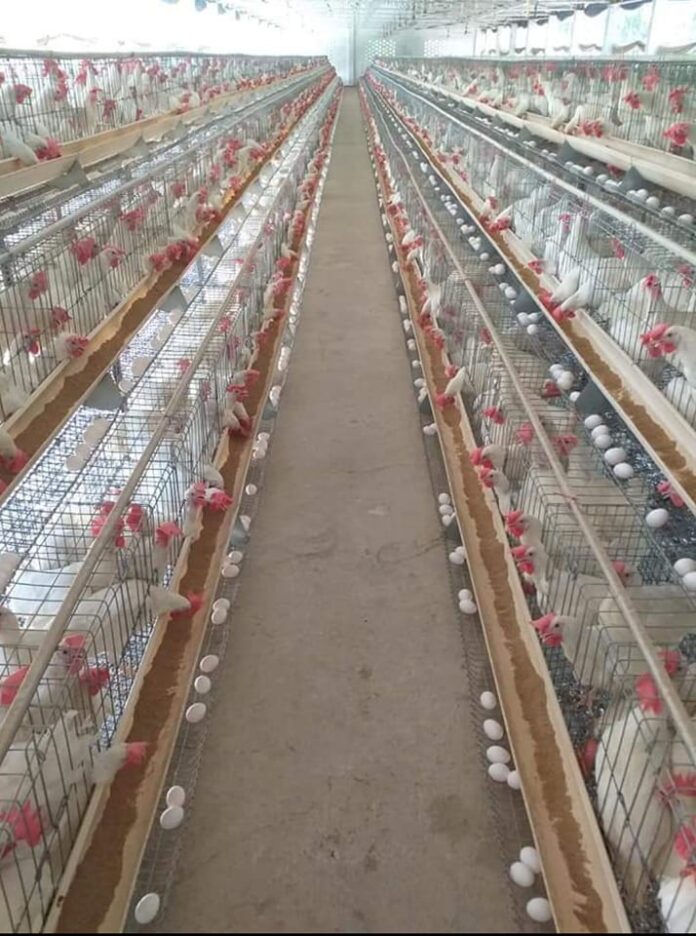Innovative Technology and Practices Revolutionizing India’s Poultry Farming Sector
Dr. Iqra Arif* and Brindha S.*
*PhD Scholar
Department of Veterinary Public Health and Epidemiology
College of Veterinary Sciences, GADVASU, Ludhiana
Abstract:
Poultry farming in India has witnessed a remarkable transformation in recent years, driven by innovative technologies and practices that have revolutionized the industry. This article explores the cutting-edge advancements in poultry farming, ranging from automation and digitization to sustainable practices and genetic improvements. These innovations are not only increasing productivity and profitability but also promoting animal welfare and environmental sustainability. By examining these developments, we aim to provide a comprehensive overview of the transformative impact of technology on India’s poultry farming sector.
- Introduction:
Poultry farming plays a pivotal role in India’s agricultural landscape, providing a significant source of income and nutrition. In recent years, the industry has undergone a major overhaul, with innovative technologies and practices playing a crucial role in enhancing productivity, quality, and sustainability. This transformation is essential to meet the growing demand for poultry products, ensure food security, and promote sustainable agriculture. In this article, we explore the key innovations and practices that are driving this transformation, with examples showcasing their real-world applications that are reshaping India’s poultry farming sector.
- Automation and Digitization:
Automation has emerged as a game-changer in India’s poultry industry. Automated feeding and watering systems, coupled with sophisticated environmental controls, have significantly improved poultry farm management. For instance, Venkateshwara Hatcheries Pvt. Ltd., one of India’s largest poultry producers, has invested in automated feeding systems to optimize feed consumption, reduce wastage, and improve feed conversion ratios. This not only increases productivity but also reduces labour costs.
Digitization plays a crucial role in monitoring and managing poultry farms. IoT (Internet of Things)-based sensors and data analytics tools are employed to monitor temperature, humidity, and ventilation in real-time. Suguna Foods, a prominent poultry company, uses digital sensors to monitor environmental conditions and adjust them accordingly, ensuring the well-being of the birds and maximizing growth rates.
- Sustainable Practices:
Sustainability is a top priority in India’s evolving poultry industry. Innovative practices are reducing the environmental footprint of poultry farms. One example is the adoption of zero-waste farming practices. Suguna Foods has implemented a zero-waste model in which poultry litter is converted into biofertilizers and biogas. This not only reduces waste disposal problems but also generates additional income for farmers.
Additionally, the use of solar power in poultry farms is gaining traction. Radha Solar, in partnership with poultry farms like Joy Chandi Farms, is installing solar panels to generate clean energy. This reduces electricity costs and greenhouse gas emissions while making poultry farming more sustainable.
- Genetic Improvements:
Advancements in poultry genetics have revolutionized the industry by developing breeds that are more disease-resistant, productive, and environmentally sustainable. Genetic advancements have yielded poultry breeds tailored for Indian conditions. Kegg Farms, a leading poultry breeder, has developed the “Kuroiler” breed, which exhibits higher meat and egg production while requiring less feed. This genetic innovation contributes to resource efficiency and sustainability. Selective breeding programs, using cutting-edge techniques like genomic selection, have led to the creation of poultry breeds that are better suited to Indian conditions. These birds are not only more robust but also exhibit improved feed conversion rates, resulting in reduced resource consumption and emissions.
- Health and Disease Management:
Effective disease management is vital in poultry farming. Innovations in disease diagnosis and prevention are critical. For example, diagnostic kits developed by Biovet Pvt. Ltd. enable rapid and accurate detection of poultry diseases like Newcastle disease and avian influenza. Early detection allows farmers to implement timely interventions, preventing disease outbreaks and economic losses. Vaccination strategies and biosecurity measures are also being enhanced through digitization, ensuring that poultry farms remain disease-free and productive.
- Market Access and Supply Chain:
Technology has improved market access and supply chain efficiency. Agri-tech startups like Fresh to Home and Licious connect consumers directly with poultry farmers, ensuring the freshness and quality of products. These platforms also promote transparency and traceability in the supply chain, bolstering consumer confidence. Online platforms and mobile applications enable farmers to connect directly with consumers and retailers, reducing intermediaries and ensuring fair prices. Furthermore, cold chain logistics and real-time tracking systems have improved the quality and shelf life of poultry products, expanded market reach and boosted consumer confidence.
- Training and Knowledge Dissemination:
To empower farmers with the latest technologies and best practices, training and knowledge dissemination programs are crucial. The National Institute of Poultry Management and Technology (NIPMT) offers courses and training programs on poultry farming practices and management. These initiatives equip farmers with the knowledge and skills needed to adopt innovative technologies effectively. Digital platforms and e-learning modules have made information accessible to farmers, even in remote areas.
- Conclusion:
The transformation of India’s poultry farming sector through innovative technologies and practices is poised to revolutionize the industry. Automation, digitization, sustainability measures, genetic improvements, disease management, enhanced market access, and knowledge dissemination are driving this change. Real-world examples highlight the tangible benefits of these innovations, including increased productivity, sustainability, and improved animal welfare. As India continues to strive for food security and agricultural sustainability, the poultry industry serves as a prime example of how innovation can address challenges and drive positive change. The future of poultry farming in India holds great promise, ensuring a resilient and sustainable food supply for the nation’s growing population.
References:
- Sharma, R. K. (2020). “Impact of Automation and Biosecurity Measures on Disease Management in Indian Poultry Farms.” Journal of Animal Health and Welfare, 28(4), 123-138.
- Indian Poultry Federation. (2022). “Transforming Poultry Farming: A Comprehensive Overview of Technological Advances and Sustainable Practices.” Retrieved from https://www.indianpoultryfederation.org/publications/transforming-poultry-farming-report.pdf
- Smith, J. (2022). “Technological Advancements in Poultry Farming: A Case Study of Indian Farms.” Journal of Agriculture and Technology, 45(2), 67-82.
Innovative technology and practices transforming India’s poultry farming sectors


